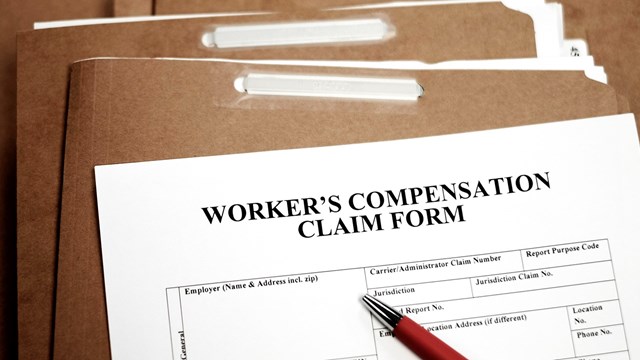For over a century, states have had laws, rules and regulations in place to ensure that employees who are injured while performing their jobs are adequately taken care of. An uninsured employer that finds itself embroiled in a workers' compensation claim may face a severe financial burden. Thus it is imperative that any entity either hiring its own employees or dealing with independent contractors at least be aware of the basics surrounding workers' compensation, and protect itself with insurance carriers and attorneys that can act in the entity's best interests. Condominium, cooperative and homeowners' associations definitely fall into this sphere—and even those without any permanent on-site employees still need coverage, since they will inevitably do business with a revolving door of vendors and contractors.
The Bottom Line
When hiring anyone in any capacity, whether a permanent employee or independent contractor, the hiring party must accept the fact that they are taking on a degree of responsibility over that individual or team, and that responsibility does not end until payment has been delivered for services adequately rendered.
"As an employer of employees, you must provide workers' compensation coverage for everyone bottom-to-top, whether they be maintenance people, doormen, porters, concierges, etc." says Evan J. Spelfogel, a New York-based attorney with the national law firm of Epstein Becker & Green, P.C. "All of these personnel have to be covered by workers' compensation insurance, which the building as an employer has to obtain either from private insurance, or, if it cannot do that, from the state workers' compensation insurance fund—a carrier of last resort. Failure to have adequate coverage in an instance where an employee suffers an on-the-job injury means that the building will become a self-insurer, and thus have to pay for all of the doctors, hospital bills and long-term effects of the injury, including permanent and partial disabilities."
Employees v. Contractors
Now, given that no two associations are the same in size, scope, and manner in which they conduct business, it's important to draw a distinction between employees and independent contractors. It's a fairly safe assumption that all associations will utilize the latter at one point in time, while smaller associations may have little need for on-site staff.
"If a board is using subcontractors for positions like maintenance and front desk, the most important thing is to make sure that the subcontractors they're using have workers' compensation insurance," notes Clifford J. Treese, CIRMS, president of Association Data, Inc. in Mountain House, California. "Depending on the degree of exposure, the board will want to consult its own insurance agent, and should consider asking the subcontractors it's dealing with—and I'm specifically referring to subcontractors who are on the premises all the time—not just a contractor who comes in to do one particular job and leaves—about getting what's called an 'alternate employer's endorsement' that would name the association. This endorsement is not easy to come by, but it does provide protection in the case that you have a subcontractor who is on the premises so regularly that it looks and feels like an association employee."
When hiring an independent contractor for a particular job—say, facade repair, to name one of almost infinite examples, Mark A. Spognardi, a partner with Pautsch Spognardi & Baiocchi Legal Group, LLP in Chicago, urges boards to make sure that the chosen contractor is properly licensed, properly bonded, and that they have both current workers' compensation and general liability policies. Spognardi also stresses that boards hire legitimate businesses that have a stable of clientele for which they perform similar types of jobs, as that can help indemnify the association against a claim.
Should an association have its own employees, it's not enough to simply have worker's compensation and employer's liability insurance; the association must apply the correct class codes that correspond to the role of the person hired. "The biggest problem an association can run into is if it misclassifies someone,” Treese explains. “For example, a clerical class when it's actually a maintenance person walking around with a hammer and saw in her hand—a class code which would come with a higher premium. With workers' compensation, there's a front-end premium that's rated retrospectively. The association must provide its payroll info and job classification, and at the end of the workers' compensation policy year, it could turn out that, were an employee misclassified, the association may owe considerably more money than it anticipated."
In some states, like Spognardi's Illinois, there are specific listed criteria via which a worker engaging in any sort of project on your property can be gauged as an employee or contractor. Oftentimes these are referred to as 'ABC' or '123' tests. "Depending on who you're hiring and what they're doing, you could get a claim from the state alleging that you had not been making contributions to the Department of Employment Security on this employee that's been working for you, and you'll counter that said employee was actually an independent contractor," he says. "For you to be in the right, that individual must A) be doing work free of control and direction of the condo association; B) doing work outside of you, the board, as the employer's, usual course of business—in other words, your board maintains the condo building, but does not perform manual labor, and thus must outsource that work—and, finally; C) requires that the hire has an independent trade, business or profession."
Treese points out that the degree to which you're responsible for someone working on the association's behalf all comes back to a simple definition of 'employee' as "someone under the employer's direction or control." So if you have a roofer working on site, and you're instructing them to work on building 1 at X time, and then on building 3 at Y time, "You've potentially converted a contractor to an employee of the association by controlling the parameters of their work," he explains. "The thing to remember is that the judgment call on an injured employee is really left to an independent tribunal at the state level that makes decisions about coverage. So you have to make sure that the contractor issues a certificate of liability insurance that showers workers' compensation, and you'll have to look at the expiration date to make sure that both of those things haven't expired before they finish a job."
And Spelfogel concurs. "The certification that the building obtains from an outside contractor should have the effective date of the current policy on it, as well as the policy number and name of the insurance carrier," he says. "You need to do your due diligence as a board member or property manager and look at the certification, examine the date of the insurance coverage, and make sure that it's sufficiently long enough to cover the duration of the job. If you get to the end of the period of insurance coverage and the job is still active, you need to make sure that you get from the contractor an appropriate appropriate renewal."
The board must be aware of the activity of individual owners as well. "If an owner is bringing a contractor into her unit to do painting, electrical work, or whatnot, the building should make sure that there's a certificate of worker's compensation coverage to cover anyone who's coming in, even if they're solely working within the unit of a specific owner," says Spelfogel. "And the insurance certificate should enure to the benefit of both the building itself and the individual apartment owner."
Accidents Happen
It's a cliché, but it's true. People are going to get hurt, and one of those people might be an employee or contractor working on behalf of your association. Even if you've taken care of the proper paperwork and are properly insured, there is still protocol to follow in the case of injury to best avoid any liability issues.
"It's the association's responsibility to make sure that the injured party reports said injury in time," says Peter Rousmaniere, an independent consultant and columnist at WorkCompCentral. "There's a strong correlation between delayed reporting and cost of injury, and there are many dynamics in play there. Even if you're a small association wherein an injury only happens every other year, the board must make sure that everyone is well-versed in the basics of reporting and filing for that rare rainy day."
In event of a mild injury, a workers' compensation claim can be ironed out by insurance brokers. But sometimes it's best to err on the side of caution and involve an attorney. "Many of my clients don't even bother calling me in workers' comp coverage situations," notes Spelfogel. "And sometimes they should have. The most common issue that comes up at a workers' compensation hearing concerning an injured worker is the degree to which that worker has been permanently disabled."
"Let's say that a worker falls off a scaffolding and breaks a leg," Spelfogel hypothesizes. "That worker's doctor will say something along the lines of 'Yes, the worker has healed, and can return to work, but the injuries were so severe that there are going to be long-standing after-effects and repercussions, and I opine that this worker is permanently and partially disabled by 35 percent.' If you look at the workers' compensation books, there are pages and pages of charts regarding what a percentage of permanent—partial disability translates to in terms of lump-sum dollar payments due by the employer or the building for different kinds of injuries, whether it be a broken leg or neck or back or finger. I don't know how many times I've been in workers' compensation cases where the company doctor will claim the worker to have 30 or 35 percent permanent partial disability, and we, representing the management side, will bring in our own expert doctor who will conduct a thorough examination and render that the disabilityif one exists at all―is only five or 10 percent. A negotiation will ensue, something in the middle will be agreed upon, and the worker will get a lump-sum payment for lifetime reimbursement of the decided-upon percentage of disability."
A board that is aware of the necessary insurance and paperwork can avoid getting hit by a false claim, so even one without permanent employees has much to gain from informing its members on the ins and outs of workers' compensation in its area. As always, if in doubt, do not hesitate to contact your attorney and insurance agent.
Mike Odenthal is a staff writer and reporter for The Cooperator and other publications.







Leave a Comment